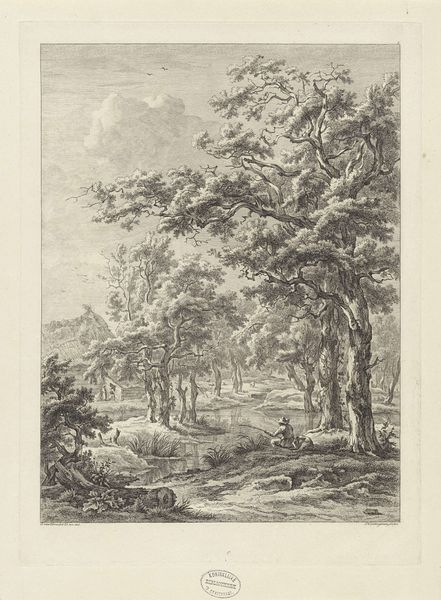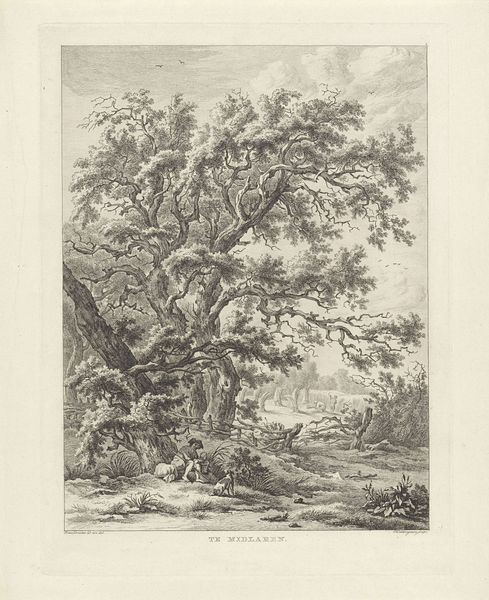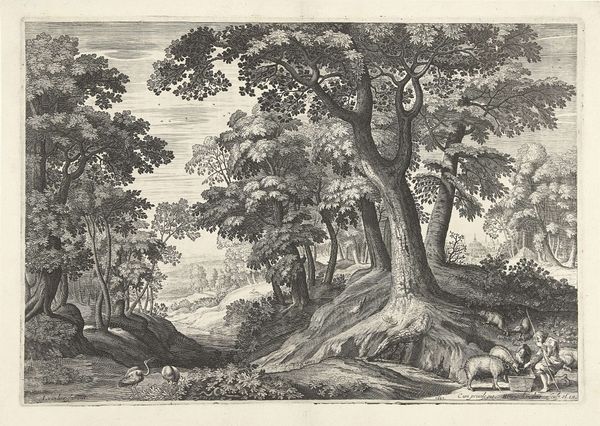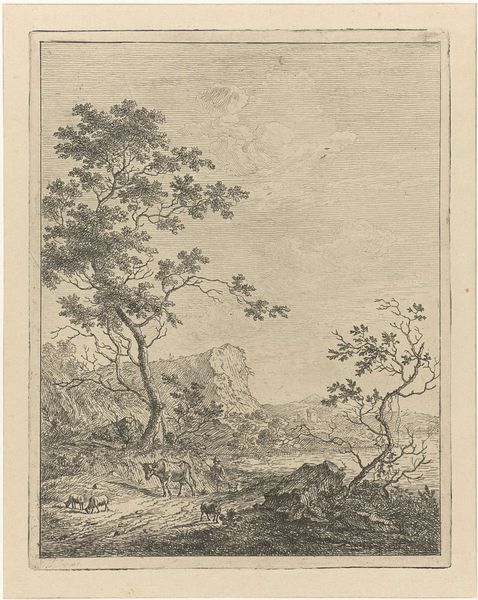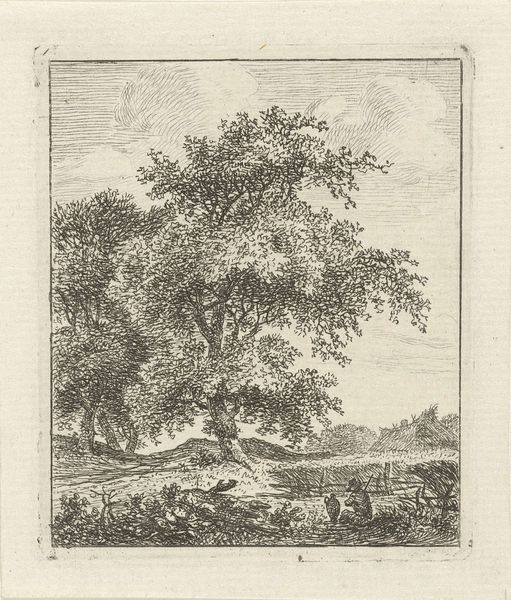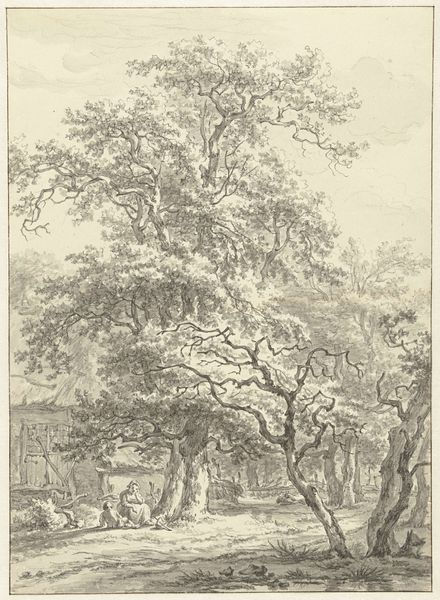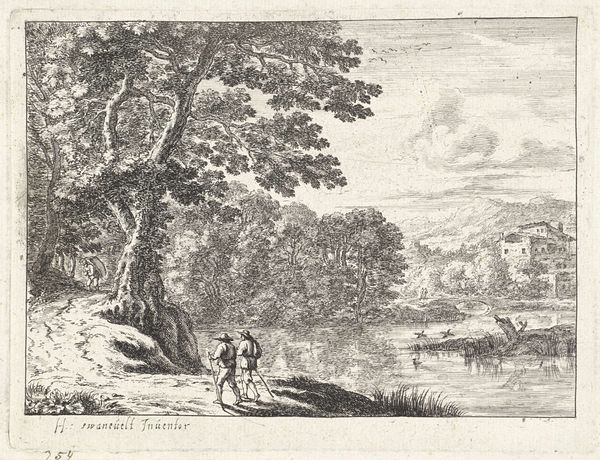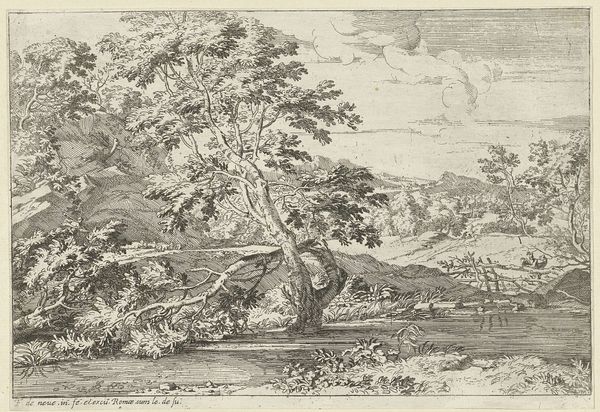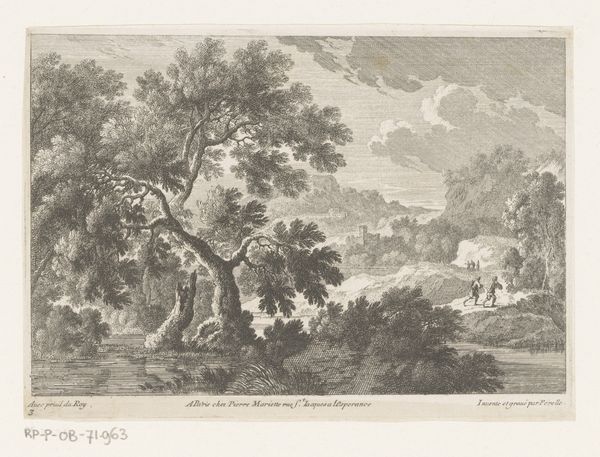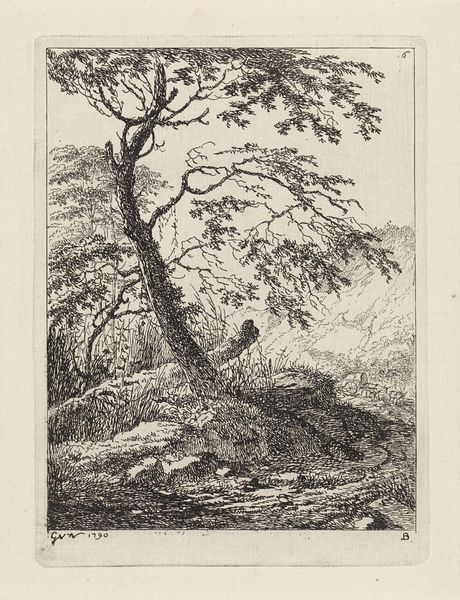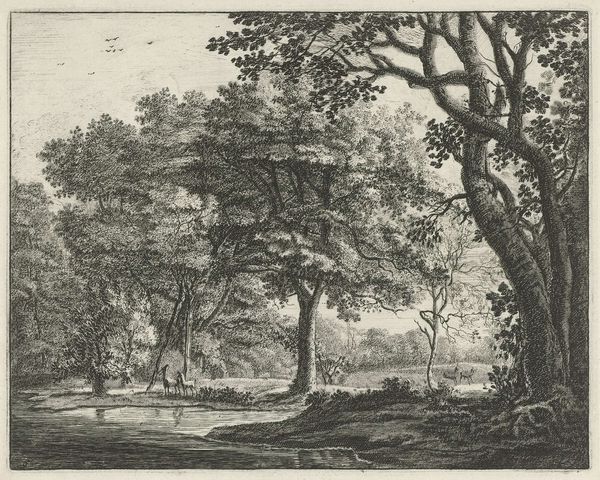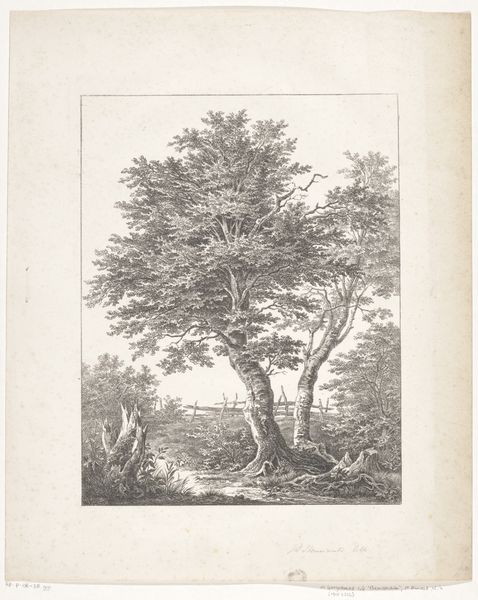
print, engraving
# print
#
landscape
#
figuration
#
form
#
romanticism
#
line
#
engraving
#
realism
Dimensions: height 400 mm, width 296 mm
Copyright: Rijks Museum: Open Domain
Editor: This is "Landschap bij Zuidlaren" by Hendrik Schwegman, created sometime between 1771 and 1816. It's a print, an engraving, and the scene feels so…domestic, somehow. I notice how people inhabit the land here. What strikes you when you look at this? Curator: What immediately captures my attention is the deliberate construction of this landscape and how it reflects evolving societal attitudes towards nature and the picturesque. The arrangement almost creates a stage for social interaction against this constructed ‘natural’ backdrop. It highlights how landscape imagery was being harnessed during that period. Do you see that play between constructed artifice and the natural world reflected in the piece itself? Editor: I think I see what you mean! It's not really wild, untamed nature. There's the figures having what looks like a picnic, and even the dog drinking from the stream…it all feels very composed. So how did these "constructed landscapes" influence broader society? Curator: These idealized depictions of nature served a significant social purpose. They fostered a sense of national identity and belonging. Prints like this were relatively accessible and helped shape the public’s perception of their environment. It romanticized rural life but it can mask the realities of rural poverty. Editor: That's a good point; the print definitely doesn't show the difficult sides of country life. It’s a curated reality. I didn't consider that this image is making a social statement through idyllic romanticism. Curator: Exactly! The subtle way Schwegman positions people within the landscape speaks volumes about the intended audience and their aspirations. It becomes an interesting case study when considering the intersection of art, politics and public sentiment. Editor: This has really changed my perspective; I initially saw a nice nature scene, but now I see it reflecting, and shaping, social ideas. Thank you! Curator: My pleasure! Considering art’s role in shaping social understanding allows for a much richer, more nuanced engagement.
Comments
No comments
Be the first to comment and join the conversation on the ultimate creative platform.
